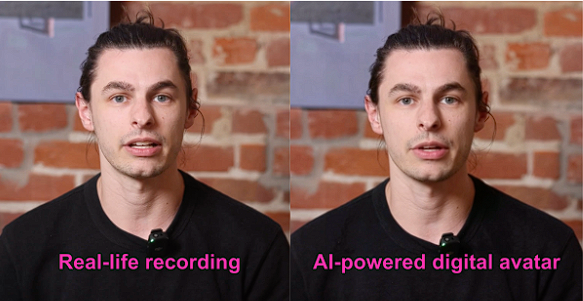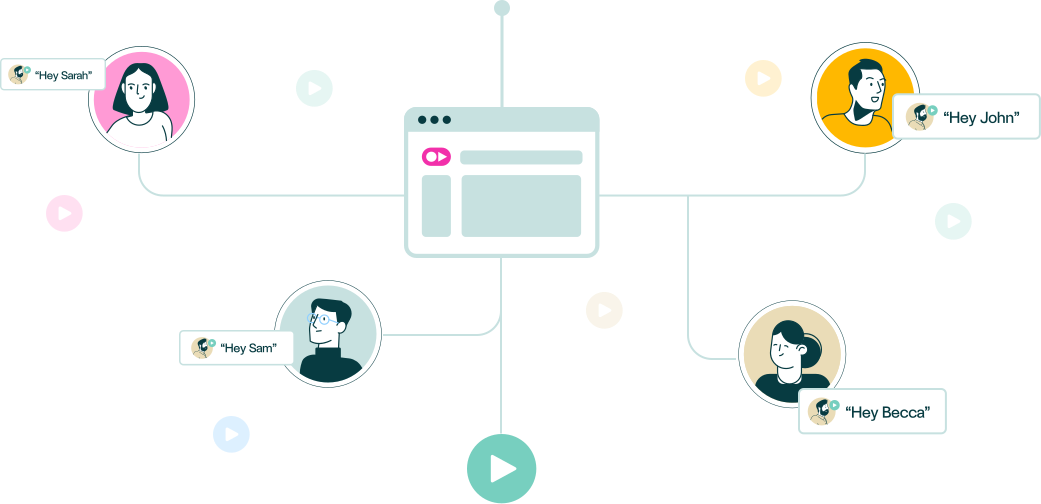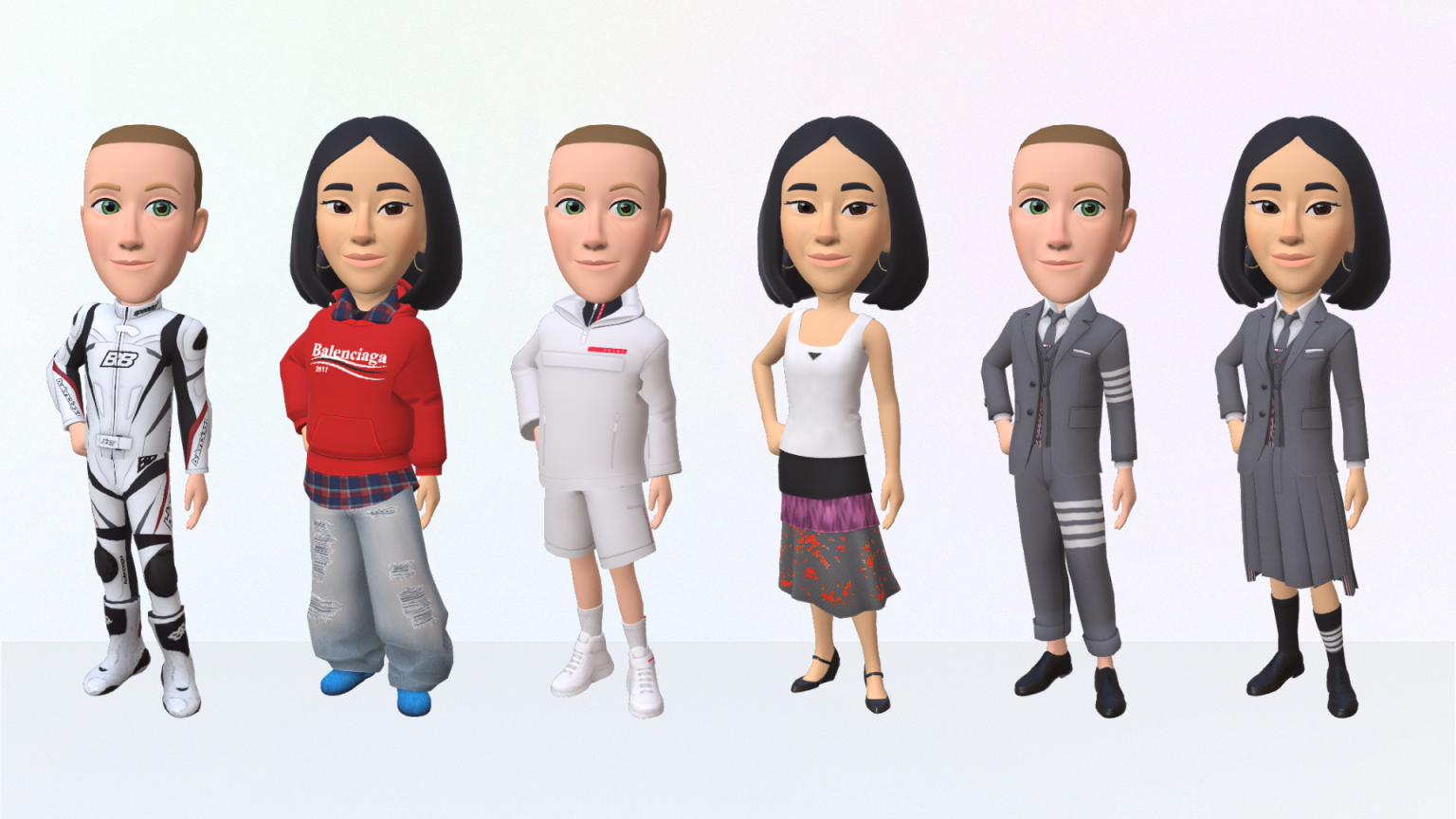All Posts
What Is a Digital Avatar and How Does It Work?


In the blink of an eye, digital avatars have evolved from simple cartoonish novelties to sophisticated, real-life replicas that are reshaping business-customer interactions.
This upward trend shows no sign of stopping. Statista estimates that the global digital avatar market will jump from 65.5 billion USD in 2022 to a massive 936.6 billion USD by 2030.
Although the metaverse and the gaming world are the key drivers of this growth, businesses have been quick to use them for:
If you want to find out how digital avatars work and stay one step ahead of the competition, you’re in the right place.
A digital avatar is a virtual representation of a real-life human or fictional character. They interact, perform a range of actions, and communicate within the online space, acting as a proxy for an individual or organization in virtual environments.
Popular in gaming for decades, digital avatars have now made the leap to business. Companies are increasingly using real-life avatars as brand ambassadors for their marketing, customer success, recruitment, and sales efforts.
For example, Tavus’ Phoenix-3 model generates exceptionally realistic talking head videos, with full-face animation, micro-expressions, and pixel-perfect lip sync that stays locked to the audio in real time. Built on a breakthrough Gaussian diffusion approach, Phoenix-3 delivers lifelike presence and identity preservation without uncanny artifacts.
Now, companies can:

Digital avatars analyze a range of biometric information, such as the shape of a face, eyes, nose, and mouth, which is used to produce a convincing virtual representation of a real person. This imagery is then combined with natural facial movements and realistic responses to offer an engaging user experience, much like a human interaction.
While the previous generation of automated business communication relied on rigid, predefined responses, digital avatar AI identifies a user’s intent and mimics contextual awareness and emotional intelligence to improve the customer experience. The result is that companies of all sizes can automate realistic, personalized video content that resonates with their audience.
Of course, none of this would be possible without a combination of artificial intelligence (AI) capabilities working together in harmony.
Text-to-speech tech is at the heart of digital avatars. Put simply, it absorbs a text-based script and reproduces it in spoken words.
Modern text-to-speech technology employs deep learning to closely mimic human speech patterns and intonations, making interactions feel more natural. This adds a huge level of emotion and realism to produce something that robotic voices never can: trust.
NLP is a landmark technology that enables digital avatars to understand and generate human language. The key advantages are that it processes user input, interprets intent, and generates responses with appropriate content and tone.
However, NLP combines user input with wider context, allowing it to participate in realistic conversations and making interactions with a digital avatar more engaging and effective.
Gamers may prefer larger-than-life cartoon representations, but businesses are all about realism. And while it’s easy to create still images of people, generating video has been a much tougher task.
Advanced systems like Tavus’ Phoenix-3 now ensure that an avatar’s full-face movements are both natural and precisely in sync with the spoken output. These innovations in facial movement are essential to creating a convincing talking head video that brings TTS and NLP to life.
APIs allow developers to integrate sophisticated digital avatar systems into their existing apps and platforms. For example, this means businesses can add personalized videos across various customer touchpoints without having to spend endless hours of their developer’s time.
Smart use of integrations means teams can host curated videos specific to each landing page, email campaign, or digital advert. Integrated digital avatars don’t draw attention away from a business’s branded CTAs, color schemes, or URLs. Instead, businesses can add videos with no complex software development and no mention of the avatar generator’s branding.
From expanding sales and marketing campaigns to immortalizing glam rock bands, the applications of digital avatars are enormous.
There are two main business applications for digital avatars and each can be divided into several sub-applications:
Here, we’re going to zoom into some of the specific use cases of digital avatars, revealing the impressive potential of this field in AI.
Videos combine narrative and visual storytelling with a friendly human face and engage customers on both emotional and cognitive levels, making them one of the most impactful mediums for sales and marketing teams.
Until now, it has been too time-consuming to consider recording a personal video for each lead. However, virtual avatar technology makes it possible to produce customized videos on a mass scale, slashing the time, effort, and resources spent on creating them.
Companies that use personalized marketing can raise 40% more revenue than those relying on standard, non-customized messaging. Digital avatars allow organizations to combine personalization with the power of video, opening the door to a seriously powerful sales and marketing tool.

With Tavus, the digital avatars look and sound so realistic that each user feels like they’re getting a tailor-made video just for them, rather than a generic one-size-fits-all marketing spiel. This is an innovative new way of fostering loyalty without the Herculean task of recording footage for every contact in your sales funnel.
Want to try it for yourself? Make your digital replica with Tavus today.
Digital avatars blow text-based teaching out of the water by customizing lessons, providing feedback, and doubling down on tricky subjects, just like a teacher-to-student dynamic. Unlike rigid virtual teaching assistants with predefined responses, AI avatars create a more interactive environment that adapts to each learner’s preferences.
Drawing on vast knowledge bases, businesses can train their teams in emerging skills and save a significant sum on external hires. Whether it’s soft skills, technical tutorials, or compliance, each learner can work through material with their customized teacher and see their progress as they complete tasks.
But perhaps the greatest benefit of avatars in teaching and training is the availability of high-quality education at any time and in any place. This makes it far more accessible for less fortunate demographics and gives people the opportunity to take training sessions wherever and whenever it suits them.
Digital avatars that use NLP significantly enhance user experience, which is why 68% of US organizations use AI in their hiring and onboarding processes. When a user hits a sticking point, they can ask for help from an avatar and get accurate, context-aware responses that remove blockers. Offering real-time feedback and support, companies can accurately monitor the progress of new hires and provide refresher courses for difficult areas.
Similarly, businesses can leverage avatars to onboard new clients. After a human-to-human welcome, AI takes over to guide clients through the onboarding process, reporting on completion rates and flagging difficult topics.
As reactive customer service transforms into proactive customer success, digital avatars are on the frontline, offering tips and tricks to get the most out of a company’s products and services. An avatar’s ability to provide personalized support, troubleshooting, and recommendations capacities is sure to have a significant impact on customer satisfaction and loyalty.
Who wouldn’t want a 24/7 personal secretary who schedules appointments, manages emails, and offers company training?
With an AI-based virtual assistant, users enjoy natural, engaging interactions, rather than adapting their communication to the algorithm’s needs. AI avatars can mimic a specific personality that complements the user’s working style, and as time goes on, they learn the schedule, habits, and preferences of their human. So, after a long, hard day, a short voice recording gives the digital avatar all it needs to lay out tomorrow’s priorities and set notifications and alarms.
Businesses have also begun leveraging virtual assistants to guide users around their websites and offer customer support. Banks, for example, have introduced digital avatars as the first line of customer service. These virtual assistants can provide fast, accurate responses and point to more comprehensive information on processes like blocking a card, changing personal data, and investing.

Virtual reality (VR) applications allow users to become digital avatars in virtual meetings, social interactions, and of course, gaming environments. This virtual world is an ideal training ground for improving presentation skills, becoming more assertive, or simply defeating the final boss in a video game.
With programs as far-reaching as medical surgery, DE&I situational training, and public speaking, VR avatars provide continuous training for teams — and the results are impressive. According to a PricewaterhouseCoopers report, VR trainees learn up to four times faster and feel more confident than their e-learning and classroom counterparts.
Virtual reality comes into its own in collaborative events such as online conferences, providing an immersive environment rather than faceless text communication or one-to-one video calls. As a training tool, VR technology can be personalized to work on an individual’s specific weaknesses for a more effective, less general experience.
Furthermore, real-time feedback gives an immediate sense of achievement, increasing the likelihood of long-term engagement.
The potential of digital avatars is exciting, but knowing how to create one is essential to reap the benefits. Luckily, despite the complexity of online avatar technology, it’s surprisingly easy to make your own model.
Here, we’re going to give you a rundown for businesses to build their first digital avatar.
There are plenty of tools on the digital avatar market, and the difference in quality is vast. So what are the most important factors when choosing an avatar generator?
In a rapidly advancing sector, the best AI-generated digital avatar makers are those who are consistently at the forefront of the latest tech—like Tavus.
Tavus’ Video Generation API enables developers and companies to create unique digital avatars that can be integrated into their existing apps and platforms. The proprietary Phoenix-3 model transforms a written script into hyper-realistic talking head videos for improved training and learning apps, sales and marketing campaigns, product onboarding materials, and social media posts.
But that’s not all. Tavus dubs videos into 30 different languages, maintaining faithful voice and lip movements. Able to create millions of customized videos in seconds, this technology gives small, ambitious businesses the chance to scale up and connect with global markets.
Discover for yourself how to leverage the Phoenix-3 model for your company.
Avatar AI needs raw materials to work from, so most tools request a photo or video to form a basis for the virtual avatar. The facial features and voice are now the template for future videos.
Again, the quality between apps varies considerably. At the top end of the scale, Tavus’ Phoenix-3 model delivers studio-grade realism with full-face animation, identity preservation, and emotional nuance in real time. This offers an unparalleled level of realism in AI-generated videos for sales, training, customer support, and much more.
Similar to personalized email marketing, you can include variables in your video scripts with APIs like Tavus’ Video Generation API which grabs CRM fields such as a customer’s first name, city of residence, or product purchased, and include them in the video. No need to re-record for each individual—Tavus creates hundreds or even millions of tailored videos in a matter of seconds.
Set the scene by editing the background of a video to drive more conversions. Adding a URL will map a scrolling screenshot of a client’s website, a LinkedIn page, or a product demo that is relevant to the viewer’s interests.
The more relevant the video, the higher the level of customer engagement.
Once an avatar exists, companies can submit fresh scripts and launch new campaigns in an instant. Forget a one-size-fits-all pitch that will sit gathering dust in your lead’s inbox. Instead, create customized content using your exact face and voice for a human connection that drives action.
The digital avatar journey may be in its early days, but its potential is huge. And the best part is that it's easy to get started.
Tavus’ digital avatar technology has already helped companies including Salesforce and Meta to achieve:
Want to get in on the action?
Create endless digital avatar videos in minutes with Tavus’ Video Generation API and see how personalized communication can turbocharge your business.